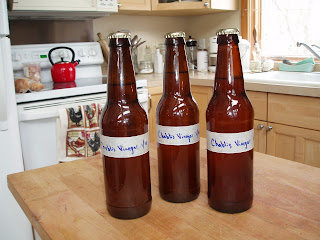This year we've got some lovely speckled and brown Australorpe eggs. They arrived yesterday but the incubator wasn't holding at the steady 100 degrees we needed, so I spent considerable time last night fiddling with it, brought the eggs up to room temp overnight, and settled them into the automatic turner this morning. It was hard to leave for work, but Conor is keeping a close watch on the temps.
This is what our girls should look like full grown. Based on pictures of the seller's flock (we bought on ebay) the hens are almost completely black with a purplish sheen. The eggs seemed good and healthy when they arrived - and fast shipping! Especially given that they traveled all the way from Oklahoma! We paid for 12 eggs but she put in an extra, which was helpful since one cracked during shipment. I have doubts about the handling of these priority mail shipping boxes and how that affects the eggs, but we'll see. Last year I picked them up and drove the Rhode Island Red eggs home on a couple of pillows - very tender care - and we had a 100% hatch rate. I don't expect nearly that good this year.
And here's a photo of our red beauties sampling the new spring grass (and everything else). Unfortunately the greenest things out there are rhododendrons and strawberries, so I had to keep a close eye on them.













